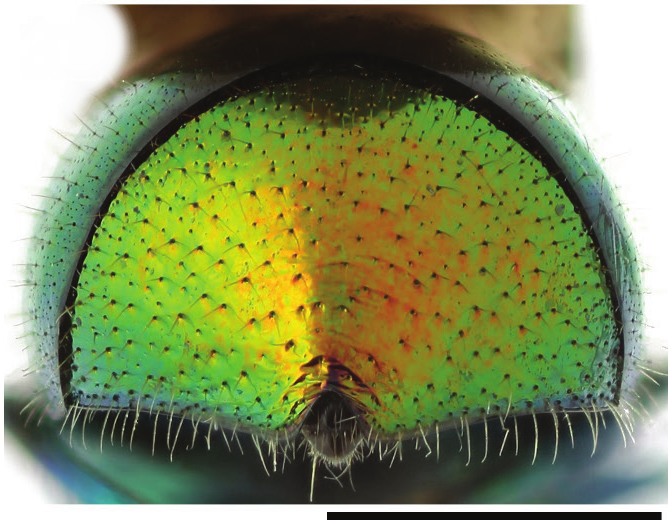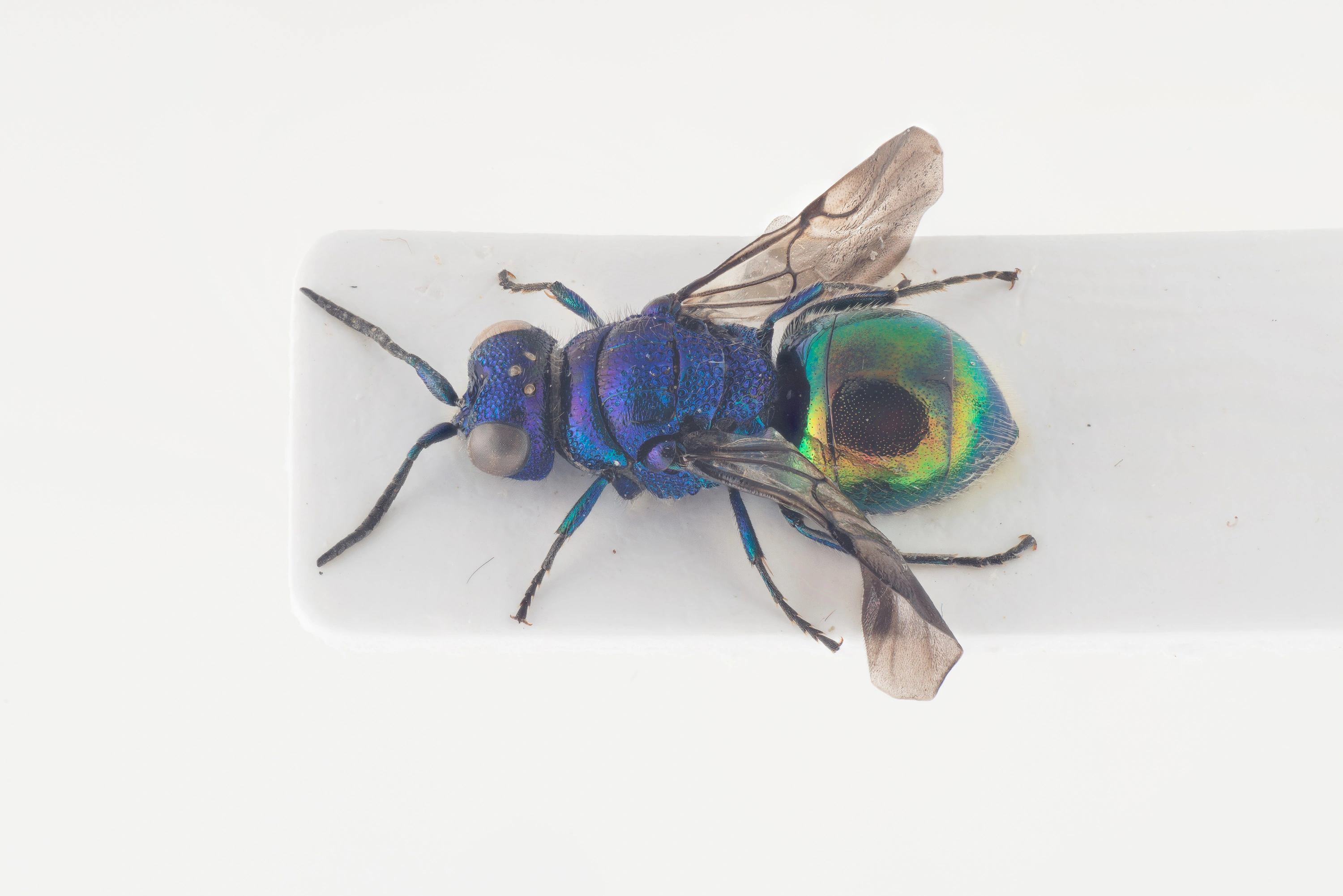Pseudomalus auratus
Figure 26
Pseudomalus auratus ♀. Scale 1 mm.
This is the most common species among the Chrysididae that curl up like a ball when disturbed. It is widely distributed and occurs in places with shruby vegetation and large amounts of dead wood. The hosts are Crabronidae in the genera Passaloecus, Pemphredon, and Psenulus. The species can be recognized by the long pubescence of the tergites and the deep apical notch in T3.
- Innhold
- Diagnosis
- Distribution
- Biology
Diagnosis
Figure 27
Pronotum and mesoscutum, dorsal view: Pseudomalus auratus ♀. Scale 1 mm.
Figure 28
Mesosoma, lateral view (arrow indicating mesopleuron): P. auratus ♀. Scale 1 mm.
Figure 32
T3, postero-dorsal view: P. auratus ♀. Scale 1 mm.
Figure 33
Antenna: P. auratus ♀. Scale 1 mm.
Length 3–6 mm.
Both sexes have a bicoloured body with a blue-green or violet head and mesosoma, and a red (or rarely entirely greenish) metasoma with green reflections (Fig. 26). The species is very similar to P. triangulifer, but the antennal segments are shorter (Fig. 33) and the body is usually smaller. The apical notch of T3 is also deeper and more rounded dorsally (Fig. 32).
Distribution
Denmark, Estonia, Finland, Latvia, Lithuania, Norway, Sweden. Common.
Trans-Palearctic/Holarctic: from western Europe and northern Africa to China, Korea and Japan. Introduced accidentally to North America (Kimsey and Bohart 1991).
Be aware that the records present in the GBIF map may be misleading for some countries due to unrevised data sets or missing information.
GBIF Taxon: Pseudomalus auratus (Linnaeus, 1761)Biology
Habitat: forest margins and clearings, gardens and parks. Often found on sun-exposed leaves of deciduous trees and bushes. Adults are attracted to honeydew of aphids and occasionally visit flowers of Apiaceae and Euphorbiaceae (Rosa 2004, our own obs.).
Flight period: May to August.
Host: cavity-nesting crabronid wasps that prey on aphids, e.g. Passaloecus corniger Shuckard, P. eremita Kohl, P. insignis (Vander Linden), P. gracilis (Curtis), P. monilicornis Dahlbom, P. singularis Dahlbom, P. turionum Dahlbom, Pemphredon inornata Say, P. lethifer (Shuckard), P. lugens Dahlbom, P. lugubris (Fabricius) and P. rugifer (Dahlbom) (Schenck 1856, Benno 1957, van Lith 1958, Brechtel 1986, Blösch 2002, our own obs.), but also Diodontus tristis (Vander Linden), which is a soil-nesting species (Blösch 2002). Host records mentioning other crabronids, such as species of Rhopalum Stephens, Trypoxylon Latreille and Crabro Fabricius, are questionable, because the prey does not consist of aphids in these taxa. Females oviposit in aphids before they have been captured and brought to the nest by the host (our own obs.). A similar behaviour has been observed also in Omalus biaccinctus (Winterhagen 2015) and postulated for Pseudomalus triangulifer (Veenendaal 2011).





